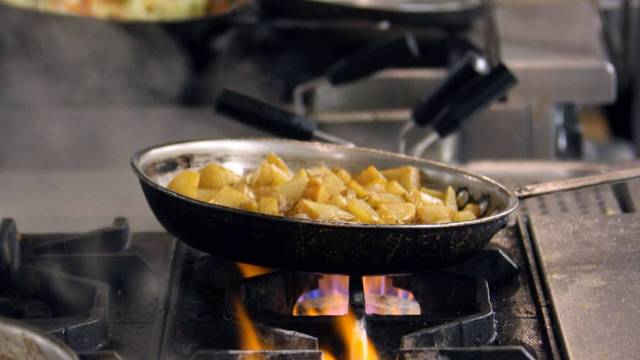Best Asian Restaurant Islamabad: Experience Flavors from Across Asia
Best Asian Restaurant Islamabad: Experience Flavors from Across Asia
Blog Article
Savor Authentic Eastern Cuisine With a Pan-Asian Spin for a Culinary Experience
Starting a cooking journey through authentic Oriental cuisine, improved with a Pan-Asian twist, uses an unique possibility to explore the rich tapestry of flavors that define the area's diverse culinary practices. This experience invites you to appreciate the splendid equilibrium of preferences-- wonderful, salted, spicy, and sour-- integrated by fragrant natural herbs and flavors. Visualize the cutting-edge blend of Thai curry and ramen or the unanticipated pleasure of sushi burritos. As you ponder these luring dishes, consider the cultural stories and historic impacts that form them, each bite offering a tale waiting to be uncovered.

Checking Out Pan-Asian Flavors
In the realm of worldwide gastronomy, Pan-Asian cuisine sticks out for its remarkable diversity and the harmonious interaction of flavors from various Oriental societies. This culinary approach commemorates the special ingredients and rich traditions found across the continent, developing a tapestry of preferences that is both interesting and rewarding. Secret to Pan-Asian cuisine is its ability to stabilize contrasting flavors-- sweet, salted, spicy, and sour-- while highlighting the quality and top quality of each ingredient.
From the umami-rich soy sauce of Japan to the intense chili peppers of Thailand, Pan-Asian food uses a substantial palette of flavors. These aspects are usually integrated in creative means, enhancing dishes with layers of complexity. As an example, using great smelling natural herbs such as lemongrass and cilantro, typical in Vietnamese and Thai cuisine, adds a refreshing illumination to meals, while the unification of coconut milk supplies a luscious, abundant appearance.
The focus on fresh produce and fragrant flavors ensures that each dish is not just a banquet for the taste but likewise for the senses. Pan-Asian cuisine invites diners to start a cooking trip, discovering the substantial and differed landscapes of Asian gastronomy with every bite.
Fusion Recipes to Attempt
While Pan-Asian cuisine is commemorated for its standard flavors, the modern culinary landscape is increasingly welcoming fusion dishes that mix these classic components with influences from various other regions. This innovative method not just honors the rich heritage of Eastern culinary arts yet also presents novel preference experiences that appeal to modern tastes.
A prime instance of such a combination recipe is the Korean-Mexican taco, where marinated bulgogi beef is wrapped in a warm tortilla, covered with kimchi and a zesty gochujang-infused salsa. This combination marries the bold, savory flavors of Korea with the vibrant, fresh elements of Mexican food. Similarly, sushi burritos have actually gained popularity, amalgamating the fragile creativity of Japanese sushi with the passionate, hand-held benefit of a burrito, frequently including blend ingredients like tempura shrimp and avocado with a drizzle of wasabi mayo.
One more significant recipe is Thai curry ramen, which infuses the luscious, fragrant spices of Thai curry into the soothing brew of standard Japanese ramen, creating a harmonious blend that tantalizes the detects. These fusion dishes extend beyond plain novelty; they represent a culinary dialogue between societies, encouraging exploration and advancement on the planet of Pan-Asian cuisine.
Essential Ingredients and Flavors
To really appreciate Pan-Asian cuisine, one have to recognize the necessary ingredients and flavors that create its structure. This diverse culinary design draws from an abundant tapestry of Asian practices, utilizing an unified mix of appearances and tastes.
Fragrant elements are pivotal, with ginger, lemongrass, and garlic being ubiquitous across various Pan-Asian dishes. These components provide an aromatic base that enhances the intricacy of flavors. Seasonings such as celebrity anise, cardamom, and cinnamon present warmth and character, resembling influences from regions like China and India.

Cooking Methods and Tips
Grasping the art of Pan-Asian food calls for experience with its unique food preparation strategies, each contributing to the vivid tapestry of tastes this cooking tradition is celebrated for. Central to these techniques is the stir-fry, a quick food preparation strategy that maintains the nutritional honesty and vivid colors of components. Using a frying pan, the stir-fry technique enables even warm distribution, important for accomplishing the particular structure and flavor balance of Pan-Asian recipes.
An additional basic method is steaming, specifically widespread in Chinese food. This mild approach keeps the natural flavors and nutrients of components, see this page making it ideal for fish and shellfish and veggies. Dumplings, a beloved staple, commonly gain from steaming, causing soft, succulent textures.
Cooking, likewise important, passes on smoky depths to recipes such as Oriental bulgogi or Japanese yakitori (pan asian restaurant Islamabad). This technique often entails marinading ingredients, enabling flavors to pass through deeply prior to cooking over an open fire or warm plate
Finally, mastering the art of stabilizing flavors-- sweet, sour, salted, bitter, and umami-- is vital. Appropriately layering these elements can boost a dish from normal to phenomenal, providing a facility and satisfying cooking experience that embodies the significance of Pan-Asian cuisine.
Dining Experiences Worldwide
Across the world, Pan-Asian food offers an unparalleled eating experience, commemorated for its abundant tapestry of tastes and lively discussions. page This culinary sensation has transcended cultural borders, capturing the hearts and tastes buds of food enthusiasts worldwide. In cosmopolitan cities like New York, London, and Sydney, Pan-Asian dining establishments function as melting pots where cooking traditions from Thailand, Japan, China, and past merge, supplying diners with an eclectic mix of meals that highlight the region's variety.
The worldwide allure of Pan-Asian food hinges on its ability to use both credibility and advancement. Cooks skillfully marry standard active ingredients such as lemongrass, soy sauce, and miso with modern techniques, leading to dishes that are both acquainted and refreshingly new. This blend permits diners to embark on a culinary trip that values heritage while embracing modernity.
In addition, dining experiences are raised via thoughtfully developed atmospheres that reflect the values of Pan-Asian visual appeals. From minimalist Japanese-inspired insides to lively Thai-themed spaces, each dining establishment supplies an unique atmosphere that matches the cooking offerings. Therefore, clients are not merely consuming a dish but partaking in a social experience, making Pan-Asian dining a really international phenomenon.
Final Thought
The expedition of Pan-Asian cuisine provides a profound understanding of the intricate interplay of tastes and culinary traditions across Asia. By accepting combination recipes such as Thai curry ramen and sushi burritos, the cooking journey sake sushi not just highlights the versatility of typical components yet additionally showcases innovative modern methods. This gastronomic journey, enriched by cooking techniques and necessary flavors, provides an unique possibility to appreciate the cultural variety and cooking creativity that define Pan-Asian cuisine on an international range.
Embarking on a culinary trip through authentic Eastern food, boosted with a Pan-Asian twist, uses an one-of-a-kind chance to explore the abundant tapestry of flavors that specify the area's varied culinary traditions.In the realm of worldwide gastronomy, Pan-Asian cuisine stands out for its impressive diversity and the harmonious interplay of flavors from numerous Eastern societies. Trick to Pan-Asian cuisine is its capacity to balance contrasting tastes-- sweet, salty, spicy, and sour-- while highlighting the quality and quality of each ingredient.

Report this page